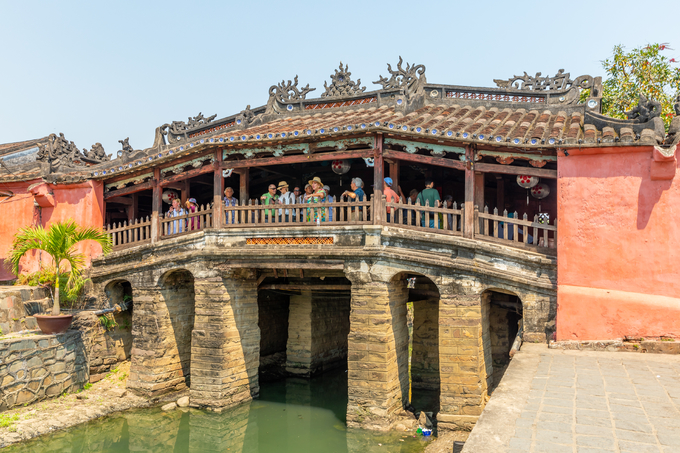Viet Nam’s Hoi An ancient town plans to curb the number of people on its iconic Pagoda Bridge to 20.

The step is deemed necessary to save the iconic attraction from possible collapse.
The 400-year-old Pagoda Bridge, built by Japanese traders in the 17th century, a national relic that appears on VND20,000 currency bills, will soon only allow 20 visitors at a time.
The bridge, which is one of the top tourist attractions in Hoi An, has suffered serious deterioration in recent years even after seven restorations and is on the verge of collapse, experts say.
Scientists and experts at home and abroad have discussed many ways to protect the bridge, including a grand conservation plan to completely dismantle and rebuild it.
While international experts have said dismantling and rebuilding it is the best way to save the bridge, local authorities have yet to decide how to save the landmark, which attracts 4,000 visitors every day.
Kieu Cu, Party chief of Hoi An, said at a Tuesday meeting that the quota would reduce impacts on the bridge before any restoration project begins.
The bridge stretches 18 meters across a canal that runs into the Thu Bon River. Many poles and beams supporting the structure have rotted and cracked, in most part due to heavy flooding in recent years.
Many of the connectors between the roof support and the column have also rotted, and some beams that support the tiled roof have cracked and warped.
The abutment section is also cracked and chunks of mortar have peeled off. The bridge and a pagoda at one of its ends are separated by a few centimeters and the leaking roof has allowed rainwater to weaken the structure of the building.
Nguyen Chi Trung, director of Hoi An Center for Cultural Heritage Management and Preservation, said two of the bridge’s beams came to the verge of collapse recently, and the center reinforced them with wooden abutments.
The Pagoda Bridge was recognized as a national, cultural and historical relic in 1990.
The ancient town of Hoi An was recognized as a UNESCO world cultural heritage site in 1998 and has become one of the top holiday destinations in Vietnam, attracting nearly five million visitors last year, including 3.7 million foreigners.